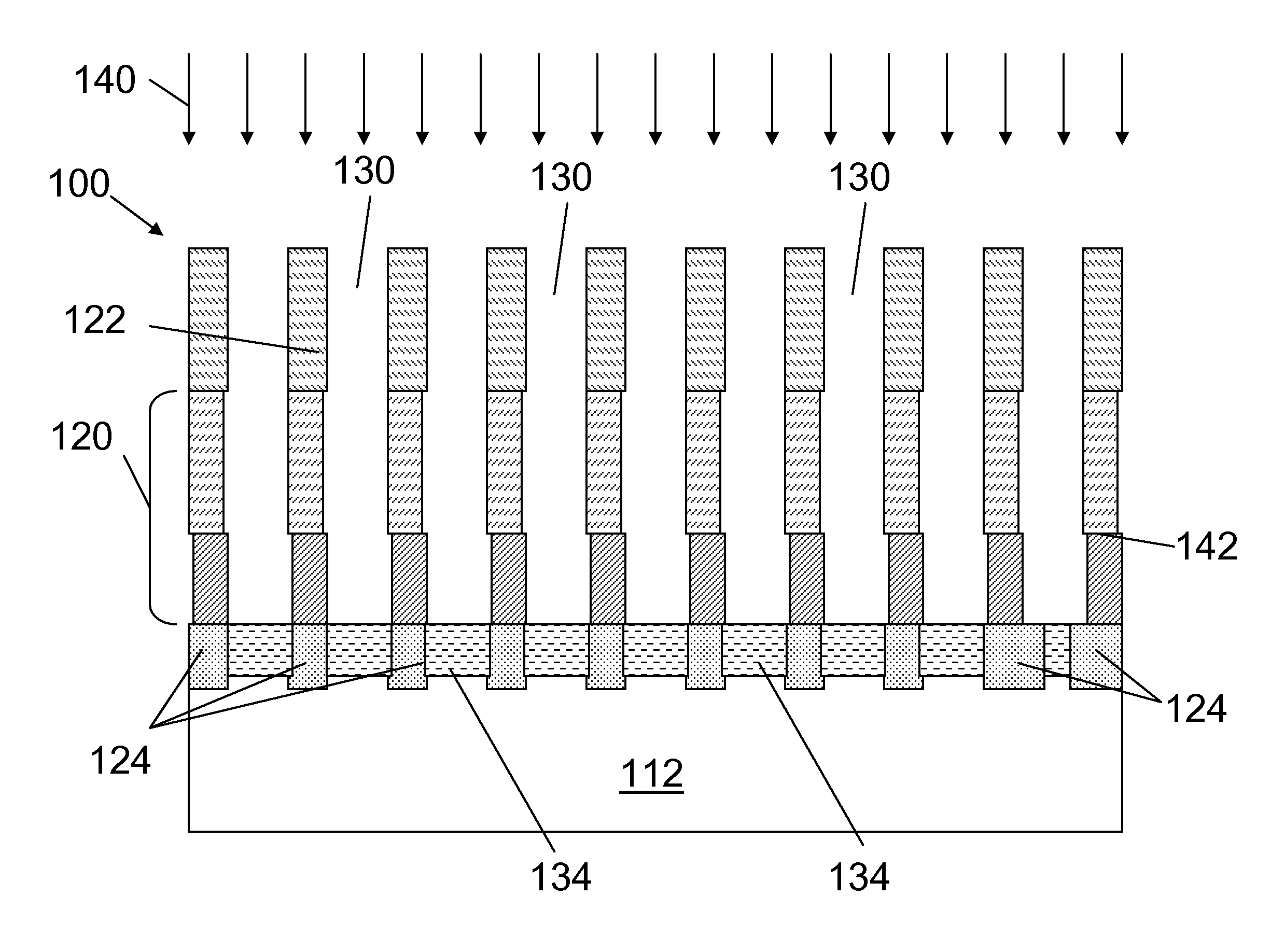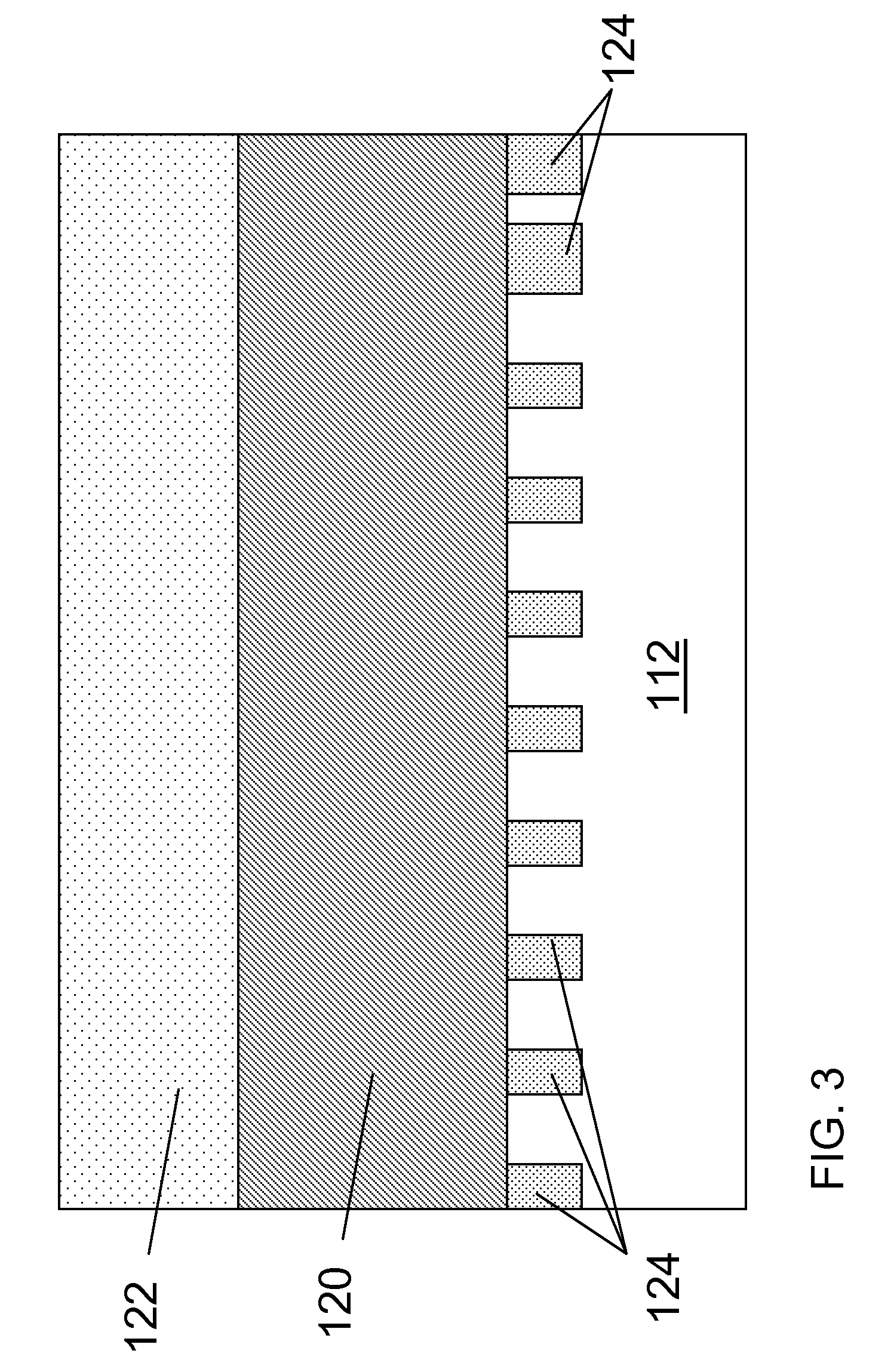Mask forming and implanting methods using implant stopping layer and mask so formed
a technology of mask and stop layer, applied in the direction of thin material processing, electrical equipment, transportation and packaging, etc., can solve the problems of reducing the efficiency of the device, affecting the performance of the device, and affecting the effect of the effect of the device, so as to reduce scattering, the effect of reducing the aspect ratio of the mask and reducing the scattering
- Summary
- Abstract
- Description
- Claims
- Application Information
AI Technical Summary
Benefits of technology
Problems solved by technology
Method used
Image
Examples
Embodiment Construction
[0018]Turning to FIGS. 3-5, one embodiment of a method of forming a mask 100 (FIG. 5) for implanting a substrate 112 is illustrated. As shown in FIG. 3, a first step includes depositing an implant stopping layer 120 over substrate 112, followed by deposition of a photoresist 122 over implant stopping layer 120. Each layer may be deposited using any now known or later developed process. In one embodiment, however, ion implant stopping layer 120 is deposited by at least one of: chemical vapor deposition (CVD), low-pressure CVD (LPCVD), plasma-enhanced CVD (PECVD), semi-atmosphere CVD (SACVD) and high density plasma CVD (HDPCVD), rapid thermal CVD (RTCVD), ultra-high vacuum CVD (UHVCVD), sputtering deposition, ion beam deposition, electron beam deposition, and laser assisted deposition. Implant stopping layer 120 may have a depth that is greater than a depth of photoresist 122. Substrate 112 may include any now known or later developed substrate material such as one or more of the foll...
PUM
 Login to View More
Login to View More Abstract
Description
Claims
Application Information
 Login to View More
Login to View More - R&D
- Intellectual Property
- Life Sciences
- Materials
- Tech Scout
- Unparalleled Data Quality
- Higher Quality Content
- 60% Fewer Hallucinations
Browse by: Latest US Patents, China's latest patents, Technical Efficacy Thesaurus, Application Domain, Technology Topic, Popular Technical Reports.
© 2025 PatSnap. All rights reserved.Legal|Privacy policy|Modern Slavery Act Transparency Statement|Sitemap|About US| Contact US: help@patsnap.com



